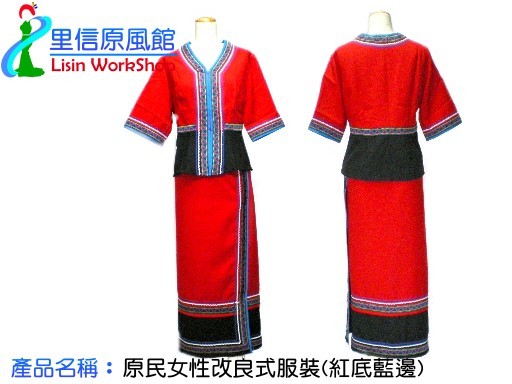里信的願望
里信設計師一直想要跟族人分享自己創作的智慧,對過去的設計經歷及對文化傳承的熱愛。從小的里信看到太陽的光芒、田野旁的小花、母親的飾品、傍晚的晚霞,身為巴魕剌的子民(阿美族語,是太陽的子嗣的稱呼),記憶中的紅色就是文化傳承的源頭,而這股能量直到現在,都是里信認真努力設計的動力,傳承也是最後的願景。
然而,2009年因著朋友的引薦,經吉安鄉公所的邀請,擔任吉娜婦女協會原住民時尚服飾製作課程講師,剛接到這份任務時,里信欣喜若狂,覺得這是一種肯定,但隨之而來的感覺是一種負擔及壓力。里信覺得自己小學沒有畢業,雖然經驗豐富,真能夠教導這些族人從服裝設計、打版、裁剪、縫紉中學習她想要傳達的文化內涵?她從16歲開始,隨著姊姊到台北工作,從紡織廠員工開始學習製作,經過兩年後因著能力備受青睞,轉職到華格爾內衣公司學習裁縫工作。這幾年的工作經驗,一直到她嫁為人婦後,重頭開始製作阿美族服飾,腦海裡的紅色印象及對母親穿上服飾的初衷,將其轉化成服飾的配色及圖騰。
傳承也要做大
如今,小女兒也繼承里信的文化服飾設計的衣缽,但里信並未感到滿意。「阿美族文化是我們每一個阿美族人的傳承,是使命,也是我們與生俱來的智慧。智慧也應該回歸族人。」里信如此說。所以,當她接到吉安鄉公所的邀請時,把握住這一次機會,跟族人分享創作服飾的心得及創作理念。
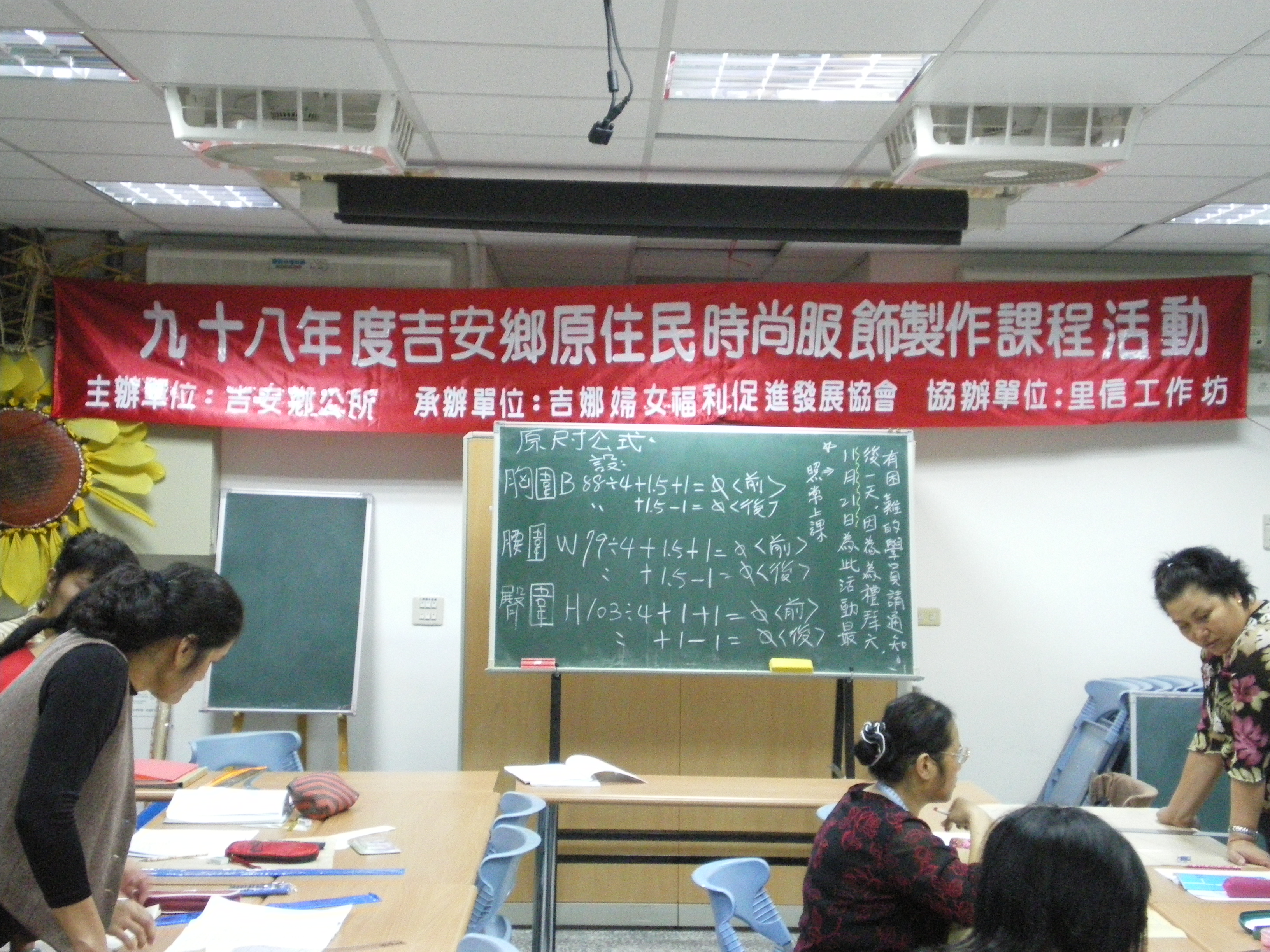 圖一 服飾製作課程第一堂-服裝設計與打版
圖一 服飾製作課程第一堂-服裝設計與打版
里信在活動過程中,對於每一個學員的問題,都當成一種學習。「因為我沒有讀書,所以本身表達上可能不一定清楚,所以我想要努力解釋清楚,盡量使用國語跟專業名詞,讓他們能慢慢理解的認識服飾文化的奧秘」。這句話謙和但有宏願的說著,里信希望大家能對於自我文化的服飾價值深感信心及高度認同。 圖圖二 服飾製作課程第二堂-打版設計指導
圖圖二 服飾製作課程第二堂-打版設計指導
熱誠也能感動人
小女兒從中學習母親里信對文化傳承的認真及執著,這些內涵轉化為服飾的配色及車縫的品質。小女兒說:「我剛開始不習慣對別人說如何開始一件服裝的設計,量身、打版的基礎也需要從頭開始學習起,但母親卻了解用有限的知識下教學,我想靠的是對文化熱誠的持守及藝術傳承的堅持,這些或許是克服困難及無私教學的衝勁吧!」
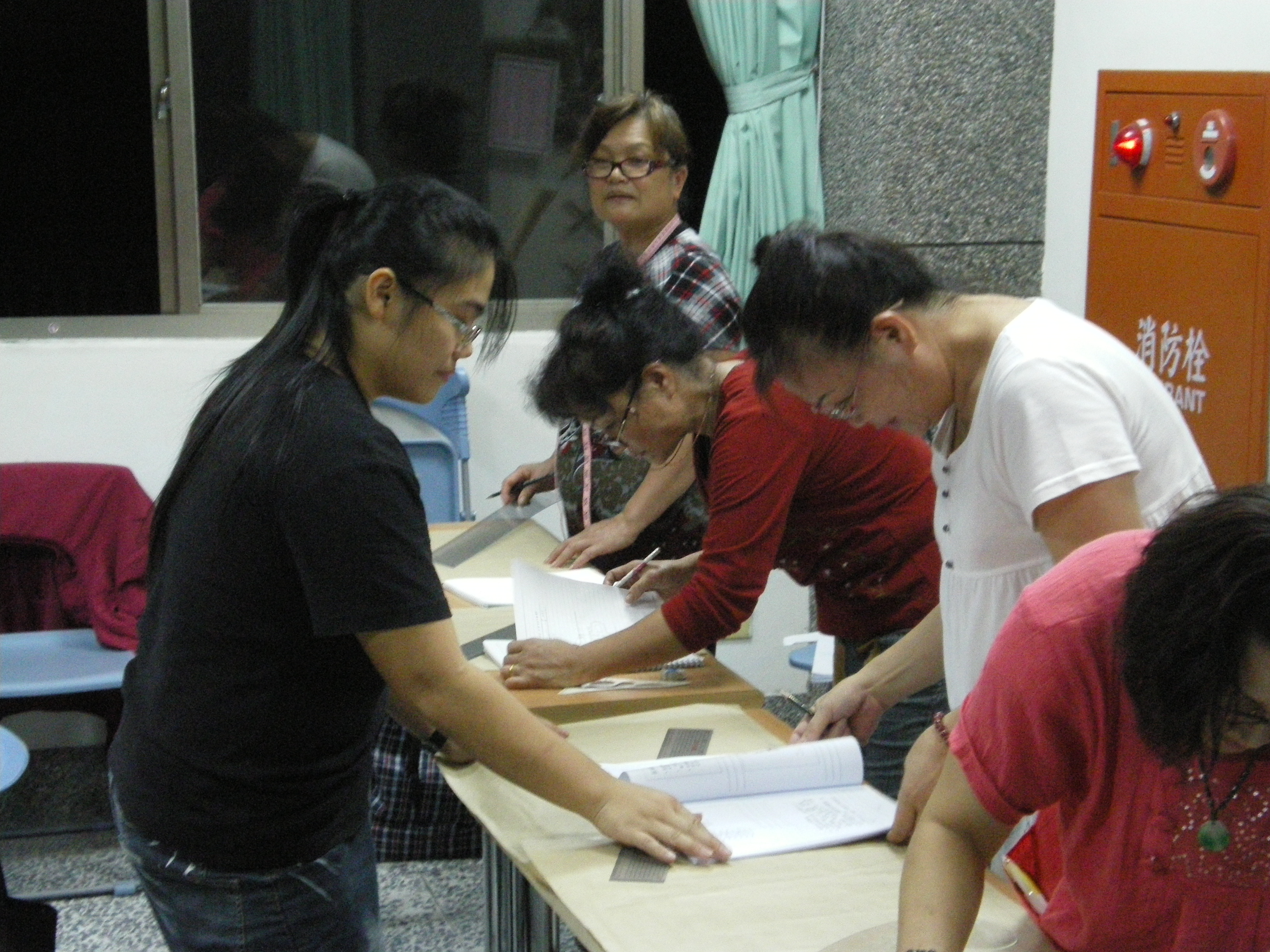 圖圖三 小女兒協助里信指導學員打版技巧
圖圖三 小女兒協助里信指導學員打版技巧
班上唯一一個男性學員,當初也是抱持陪伴太太一起來了解,也可以蹉跎一下時間,但他表示來這裡是正確的選擇,雖然不能跟大家做女性套裝,但做男性背心也是一門功課。他說:「我覺得在這裡可以知道原來做衣服(阿美族服裝)也是很專業的事情,不是布料拿來剪剪貼貼就可以穿了(呵呵呵地笑著)。但將服裝穿在身上,就是把文化穿在身上,而且知道是自己努力過的成果,感覺這件背心就不只是文化而已,而是傳承文化。」
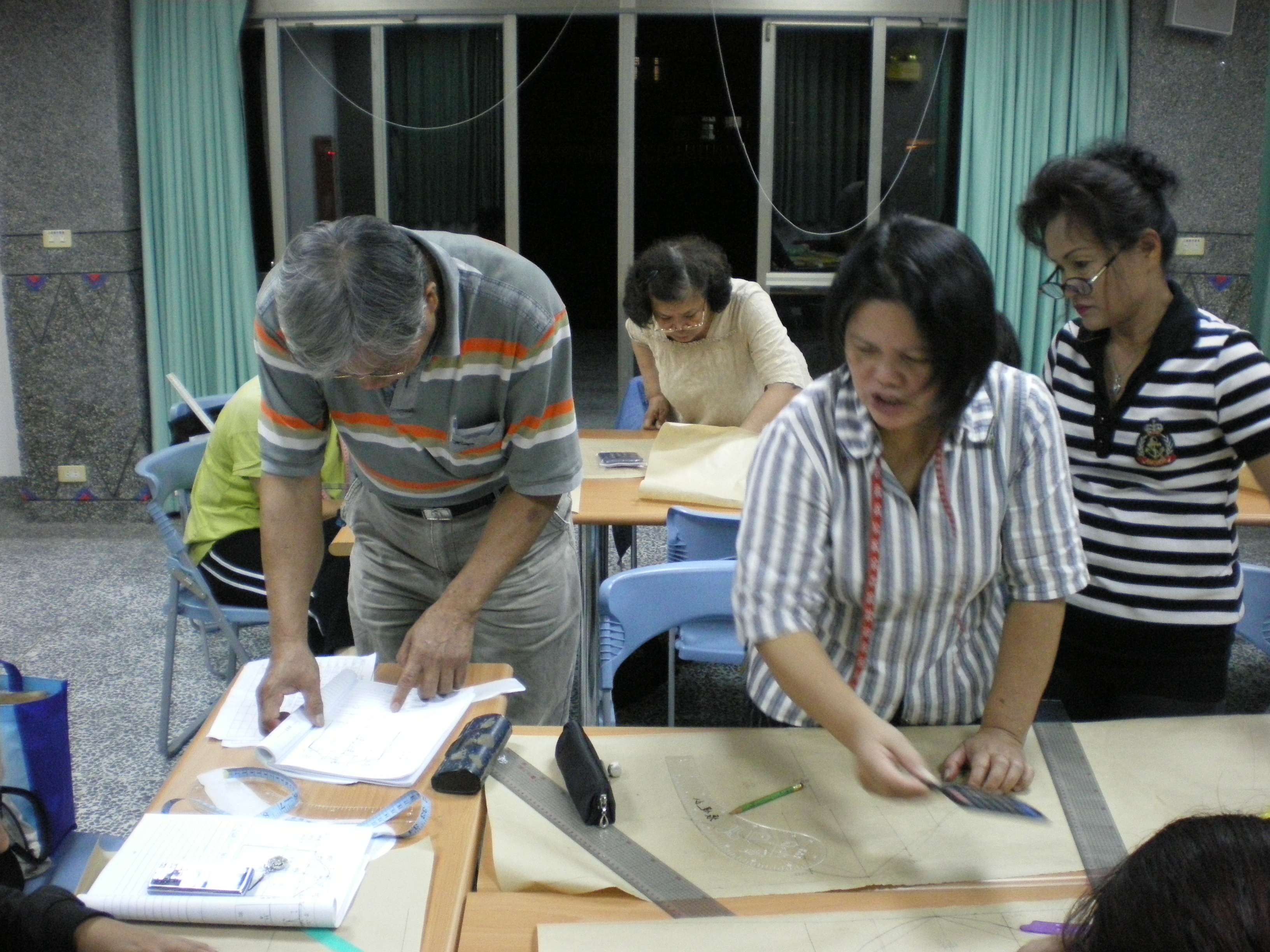 圖四 課程中僅一位男性學員參與
圖四 課程中僅一位男性學員參與
尊榮的紅色記憶
此次活動的目的,是“結合工坊藝術工作者及裁縫相關設備資源,辦理社區部落婦女服飾製作課程活動,期能提升社區部落婦女休閒育樂及就業能力,進而再造社區部落機能品質”,但有趣的事,卻讓族人在做服裝的過程也找到自己身為文化傳承者的價值。經由這一次的活動,大家也完成了自己的一套原民改良服飾。在黑色的衣服中,紅色的縫邊烙印在胸口及裙邊,袖口及後腰上鑲上尊榮的紅色,小花圖騰在也跟著紅邊,里信表示這是有母親的地方,就有了生長的記憶,就如同大地之母孕育萬有,讓各地方如花多般總是欣欣向榮著。整套的特色讓雍容華貴的服飾上出現美麗的記憶,除了製作上的困難被突破外,就是對自己更加的認識了。
學員對課程的回饋1:「很適合再開班,(里信)老師懂的把老人的記憶轉換成服飾配色,期待下次能針對S彎邊及圖騰選樣來教學。」
學員對課程的回饋2:「(里信)老師真的很厲害,這是一個物超所值的活動。」
學員對課程的回饋3:「沒有學歷不是一種限制,ca'ay ka pisawad(永遠不要放棄自己),只要有熱誠及初衷。老師就是一個靠著神的傳奇人物。」
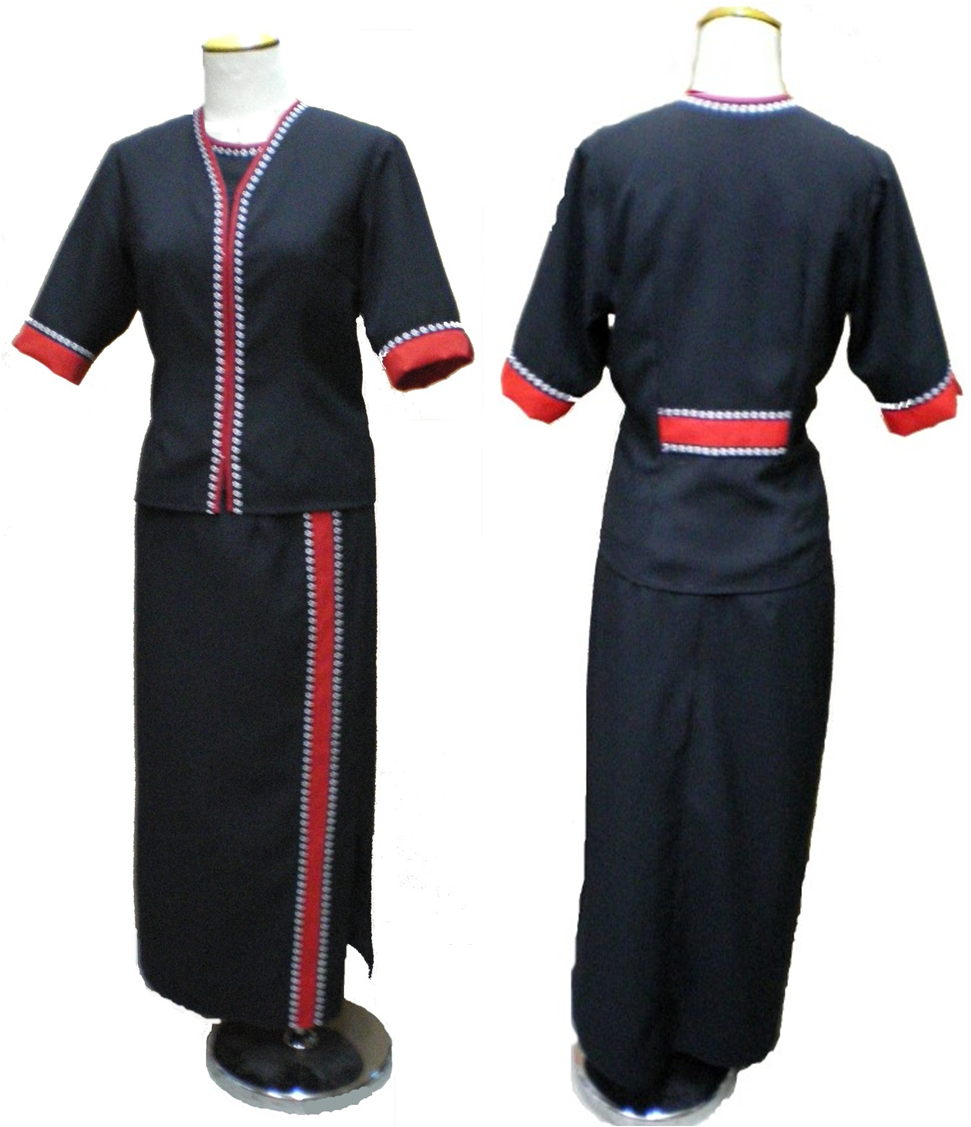
里信芭閣娜,下期繼續挖掘她的故事。
In 2009, offered Indigenous Clothing Tailoring Course
Lisin's aspirations
Lisin has always wanted to share their creative wisdom and passion for cultural heritage with their fellow tribespeople. From a young age, Lisin was inspired by the sunlight, the tiny flowers in the fields, the adornments of their mother, and the evening sky's hues. As a child of the sun, known as "special" in the Amis language, the color red represents the source of cultural heritage in their memories. This energy has driven Lisin's dedicated design efforts, and conserving culture is their ultimate vision.
However, in 2009, Lisin was thrilled and burdened when invited by the Ji'an Township Office and recommended by a friend to become a lecturer for the Indigenous Fashion Design course at an Association. While it was a validation, it also came with a sense of responsibility and pressure. Lisin felt insecure about not having completed primary school, despite their rich experience. Could they genuinely teach their fellow tribespeople the cultural significance conveyed through clothing design, pattern making, cutting, and sewing? Lisin started their journey in the textile industry at 16, accompanying their older sister to work in Taipei. They began learning garment production as a factory worker and eventually transitioned to a tailoring position at a lingerie company called Wacoal, where their skills were highly regarded. After getting married, Lisin returned to their roots and began crafting Amis tribal attire, translating their impression of red and their original intention of dressing their mother into the color schemes and motifs of the garments.
The industrial heritage
Nowadays, Lisin made the clothing design legacy is being passed down to her daughter. However, Lisin does not feel entirely satisfied. "Amis culture is the heritage of every Amis person. It is our mission and inherent wisdom. Wisdom should also return to the tribe," says Lisin when she received an invitation from the Ji'an Township Office in Hualien, taiwan. She seized the opportunity to share her insights and creative concepts of designing clothing with her fellow tribespeople.
During the event, Lisin treated each student's questions as a learning opportunity. "Because I didn't receive a formal education, my expression may not always be clear. So I try my best to explain things clearly, using Mandarin and professional terminology so they can gradually understand the mysteries of clothing culture," Lisin explains. With humility and a grand vision, Lisin hopes that everyone will have confidence and a strong sense of identification with the intrinsic value of their cultural clothing.
Passion Can Move People
Lisin's daughter learned from her mother's dedication and perseverance in cultural heritage. These values are translated into the color schemes and quality of the clothing. The daughter says, "At first, I wasn't used to telling others how to start designing a garment. I had to learn the basics of tailoring and pattern-making from scratch. But my mother understands how to teach with limited knowledge. I rely on my passion for culture and my commitment to artistic heritage. Perhaps it is this drive that overcomes difficulties and selflessly teaches others!"
A male student who is one in this class initially joined to accompany his wife and thought it would be a way to spend some time. However, he expressed that coming here was the right choice. Although he cannot make women's suits like the others creating a men's vest is also a valuable lesson. He says, Being here makes me realize that making clothes (Amis tribal attire) is a professional craft. It's not just about cutting and pasting fabric together (laughs). But when you wear the clothing, it's like wearing the culture itself. And knowing that it's the result of my efforts, this vest represents more than just culture and the transmission of civilization."
Honoring the Red Memories
This event aimed to "combine the artistic talents of the workshop artists with the resources of sewing equipment to conduct clothing-making courses for women in the community, to enhance their leisure, recreational, and employment capabilities, and thereby revitalize the community's tribal functions and quality." Interestingly, the participants also found their value as cultural inheritors while making clothing. Through this event, everyone completed their own set of modified indigenous clothing.
In the black garments, red stitching adorns the chest and hem, while the cuffs and back waist are adorned with the esteemed red color. The small floral patterns also follow the red borders. Lisin expresses that this is where the mother's presence is felt, and memories of growth emerge, just as the Earth Mother nurtures all things, allowing different regions to flourish like flowers. The distinctive features of the entire ensemble bring forth beautiful memories of the elegant and noble clothing. Aside from overcoming the challenges in the production process, it is also a journey of self-discovery. Feedback from the participants about the course:
Participant 1: "It would be great if there could be another session. The teacher (Lisin) knows how to transform the elders' memories into clothing color schemes. Looking forward to focusing on the 'S-curve border' and selecting patterns for future teachings."
Participant 2: "The teacher (Lisin) is truly amazing. This was a precious activity."
Participant 3: "Not having a formal education is not a limitation. 'Ca'ay ka pisawad' (never give up on oneself), as long as there is passion and original intent. The teacher is a legendary figure inspired by the divine."
(本文圖片翻拍於活動紀念影片,已經主、協辦單位同意使用,下載、公開使用請徵求工坊意願!)


